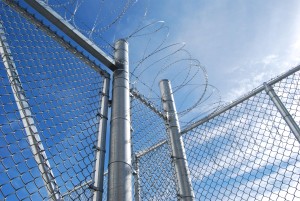By John Van Swearingen
On Wednesday, October 26, 2016, the Fourth Circuit issued a published opinion in the criminal case United States v. Alvarado. The district court had issued an order precluding the government from calling upon two witnesses to testify about anything discussed during a grand jury proceeding for a post-superseding indictment; the order also excluded those witnesses’ grand jury testimony for all purposes at trial, including impeachment. The government appealed, arguing the district court abused its discretion by excluding this evidence. Further, the government argued that, in the absence of a finding of prosecutorial misconduct, evidentiary exclusion cannot be used as a remedy. The Fourth Circuit vacated the district court’s order, holding that the district court abused its discretion by ordering the exclusion of the evidence for two reasons. First, the district court did not provide any legal justification for determining how the scope of the government’s questions at the grand jury proceeding exceeded permissible grounds. Second, the district court did not explain how delay, cited by the district court as a reason supporting the exclusionary remedy, was appropriately related to the remedy. However, the Fourth Circuit refused to adopt a blanket policy forbidding district courts to enact exclusionary remedies regarding grand jury proceedings in the absence of prosecutorial misconduct.
Facts and Procedural History
On December 4, 2014, Maria Rosalba Alvarado McTague (“Alvarado”) and Felix Chujoy (“Felix”) were indicted by a federal grand jury for visa fraud and immigration charges. More specifically, Alvarado and Felix were accused of smuggling undocumented immigrants into the country to work, in horrendous conditions and for below minimum wage, in their Peruvian restaurant in Virginia. Alvarado and Felix were released on bond. Expecting a superseding indictment, the defendants and the government moved jointly for a continuance. The district court set trial for June 22, 2015.
The grand jury returned a superseding indictment on March 12, 2015. Alvarado and Felix were charged with additional counts of labor trafficking, Gladys Chujoy was added as a defendant, and all three Defendants were charged with witness tampering, conspiracy to witness tamper, and obstruction of justice. Because evidence suggested Alvarado and Felix were using third-parties’ phones to contact witnesses, their bonds were revoked by the magistrate.
The government continued investigating these matters by questioning individuals whose phone numbers appeared in the phone records of witnesses. Carolyn Edlind (“Edlind”) and Sheriff Donald Smith (“Smith”) were interviewed during this investigation in May 2015, and both were subsequently subpoenaed to testify at trial.
On June 21, 2015, the government moved to continue the trial because of a personal emergency. Defendants did not object and explicitly waived any speedy trial objection; however, Alvarado did have to retain new counsel. The district court set trial for October 26, 2015.
In August 2015, counsel for an inmate incarcerated alongside Felix contacted the government with an invitation to interview that inmate. The inmate advised that he and others had provided PINs to Felix in order to facilitate Felix making surreptitious phone calls. After obtaining the recorded conversations, the government discovered evidence that Felix, Edlind, and Smith were potentially engaged in a witness-tampering scheme.
On October 6, 2015, the government subpoenaed Edlind and Smith to testify before the grand jury regarding the post-superseding indictment tampering scheme. This information was disclosed to both the district court and Defendants.
On October 20, 2015, Felix, Edlind, and Smith testified before the grand jury about the scheme, and the grand jury returned a new indictment. Felix and Edlind were charged with new counts of witness tampering, conspiracy to witness tamper, and obstruction of justice. Edlind was also charged with an additional count of obstruction (based on her prior grand jury testimony) and perjury.
Alvarado thereafter filed a motion to continue in order to investigate the possibility of prosecutor misconduct. The court granted the motion, set trial for December 1, 2015, and invited all Defendants to join the investigation regarding prosecutorial misconduct.
On November 13, the Defendants filed a joint motion for dismissal of all indictments, alleging the government used the third grand jury proceeding with the primary intent of uncovering evidence for the charges on the March 12 indictment as well as determining the Defendants’ trial strategy. The district court found no prosecutorial misconduct and denied dismissal of the indictments. However, the district court forbade the government from calling Edlind or Smith to testify about anything covered in their testimony before the October 6 grand jury; the court also excluded that testimony for any use at trial, including impeachment.
The district court stated this exclusionary remedy was appropriate for two reasons. First, the district court stated the government’s questions during the October 6 grand jury proceeding delved too far into the original underlying charges. Second, the court stated, in the interests of fundamental fairness, the delay caused by the government’s June 21 continuance and Alvarado’s later continuance supported exclusion.
The government appealed pursuant to 18 U.S.C. § 3731 and 28 U.S.C. § 1291, arguing two points. First, the district court’s exclusionary remedy was an abuse of discretion. Second, an exclusionary remedy could never apply without prosecutorial discretion.
Exclusion of Evidence Based on the Government’s Questioning, Where the Questioning Had the Dominant Purpose of, and in Fact Did, Produce New Indictments, Was an Abuse of Discretion
The Fourth Circuit held the district court abused its discretion in excluding the grand jury evidence. Absent compelling evidence that the grand jury process was abused – for example, finding that the dominant purpose of a grand jury proceeding was building evidence against a defendant already charged – district courts are generally guided to refrain from intervening. See United States v. Moss, 756 F.2d 329, 331–32 (4th Cir. 1985).
Also, grand jury proceedings have a presumption of regularity that is bolstered when those proceedings result in new indictments. Id. The function of those proceedings, gathering evidence for an indictment, requires broad latitude in questioning witnesses. See id. at 332. Investigating additional crimes, for example, does not require the government to ignore previous ones.
Here, the district court did not find any improper purpose behind the October 6 grand jury proceedings. Additionally, the district court did not explain its legal basis for determining that the government’s lines of questioning in the October 6 proceeding – given the regularity of grand jury proceedings and the fact that new indictments were, in fact, issued – merited an exclusionary remedy. Rather, the court based its remedy on incidental benefits to the government’s case as a result of the proceeding, as well as the court’s determination that some questions seemed too far removed from the new allegations. Lacking a finding of bad faith or improper purpose, the district court essentially excluded the government’s evidence as punishment for not being clairvoyant. The Fourth Circuit therefore held the district court abused its discretion by issuing an exclusionary remedy.
Exclusion of Evidence Based on Delay Without a Supporting Legal Basis Was an Abuse of Discretion
The Fourth Circuit also held the district court’s exclusion of evidence based on delay was an abuse of discretion. The district court never explained in its order why the continuances it once granted later justified exclusion of evidence. The district court did not find bad faith on behalf of the government; further, the court did not state that the government did anything other than conduct a good-faith investigation into the new witness tampering and obstruction charges.
If a district court is going to exclude evidence on the basis that the evidence was attained due to a bad-faith continuance, grand jury abuse, or other prosecutorial misconduct, then the court must clearly state so in its order. Failing to do so – yet ordering exclusion of evidence – was an abuse of the district court’s discretion.
Strict Categorical Limitations on District Courts’ Powers to Issue Remedies in Grand Jury Proceedings Rejected
The Fourth Circuit rejected the government’s argument to categorically limit a district court’s available remedies regarding grand jury proceedings. As argued by the government, if a grand jury proceeding is found to have a proper dominant purpose, the district court will be unable to issue any remedies regarding evidence and testimony obtained during that proceeding. Such is the case in the Eleventh Circuit – a district court may only issue an exclusionary remedy if grand jury proceedings were conducted with the improper dominant purpose of obtaining evidence for existing charges. See United States v. US Infrastructure, Inc., 576 F.3d 1195, 1215 (11th Cir. 2009).
The Fourth Circuit did not want to exclude the availability of a remedy for lines of questioning that skirt the limits of permissibility but do not go beyond them. In certain situations, the court held, remedial actions may still be justified despite a proper dominant purpose for grand jury proceedings.
However, the district court here failed to justify its exclusionary remedy. The district court failed to state any findings of bad faith or prosecutorial misconduct in its order. The government’s lines of questioning did not support a finding of improper purpose. The delays were not connected to reasons for the district court’s exclusionary remedy. For those reasons, and not – as the government proposed – due to a blanket prohibition on available district court remedies, the Fourth Circuit vacated the district court’s order.
Disposition
The Fourth Circuit vacated the district court’s order excluding evidence and testimony from or relating to the October 6 grand jury proceedings. The court remanded the case back to the district court with instructions to either (a) admit the excluded evidence or (b) issue a new order specifically stating how the exclusion of the evidence is narrowly tailored to the court’s concerns regarding the government’s conduct.


